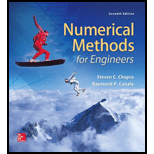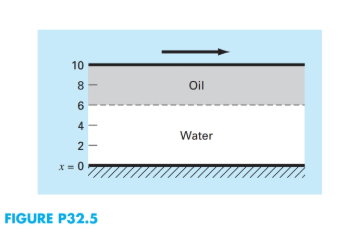
Two plates are 10cmapart, as shownin Fig.P32.5. Initially, both plates and the fluid are still. At
and the following relationships hold true at the oil-water interface:
What is the velocity of the two fluid layers at

Want to see the full answer?
Check out a sample textbook solution
Chapter 32 Solutions
Numerical Methods for Engineers
- When (approximately) is the body moving at a constant speed?arrow_forwardSuppose that over a certain region of space the electrical potential V is given by the following equation. V(x, y, z) = 3x2 – 2xy + xyz (a) Find the rate of change of the potential at P(3, 4, 4) in the direction of the vector v = i +j-k. 20 V3 (b) In which direction does V change most rapidly at P? 5i 3k V 35 V 35 V 35 (c) What is the maximum rate of change at P? V 856arrow_forwardSuppose that over a certain region of space the electrical potential V is given by the following equation. V(x, y, z) 4x2 - 2xy xyz (a) Find the rate of change of the potential at P(2, 4, 4) in the direction of the vector v = i + j - k. (b) In which direction does V change most rapidly at P? (c) What is the maximum rate of change at P?arrow_forward
- Algebra & Trigonometry with Analytic GeometryAlgebraISBN:9781133382119Author:SwokowskiPublisher:Cengage
